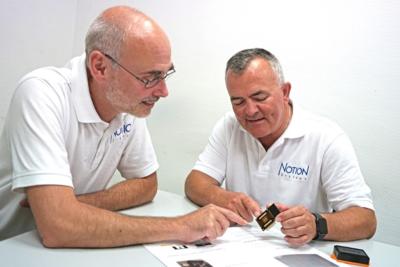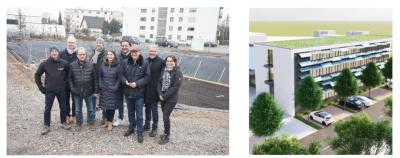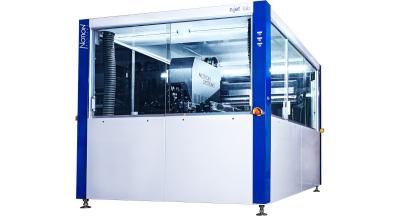OLED (Organic Light Emitting Diodes) is a flat light emitting technology, made by placing a series of organic thin films (usually carbon based) between two conductors. When an electrical current is applied, light is emitted. OLEDs are used to make displays and lighting panels. OLEDs today are widely used in TVs, smartphones, tablets, laptops and wearables.
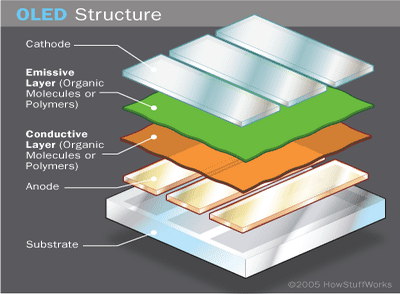
While OLED displays excel in color-contrast and efficiency compared to LCDs, they’ve also proven relatively hard to produce on a large scale. A potential technology that could reduce OLED production costs is inkjet printing.
OLED inkjet printing
Current OLED production relies on evaporation processes, in which the organic materials are deposited onto a glass sheet through a thin metal stencil, also known as a "shadow mask". This process is problematic, as a significant amount of the material is wasted because it disperses all over the mask, in addition to inherent mask changes which expose the sheet to dust and compromise yields (OLEDs are by nature sensitive to contamination).
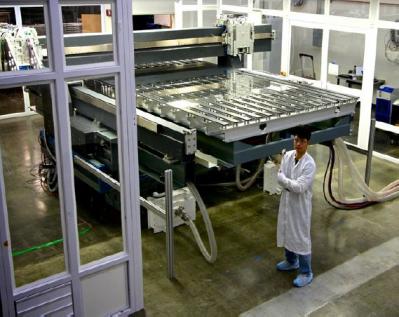
Inkjet OLED printing has the desirable ability to allow precision deposition without the use of a mask. It also produces less stray particles, thus boosting yields. These significant advantages make this technology interesting to many OLED developers. Printing OLEDs, though, is a challenging task - in terms of production process viability, drying the materials, production time, and the soluble OLED materials which are less effective than evaporable ones. It is also challenging for inkjet printing to reach high densities, and in the past it was believed that inkjet printing is only suitable for TV production. In recent years, though there's been much improvement and now we are seeing higher density prototypes (laptop displays, for example).
Printed OLEDs in 2024
Inkjet printing is adopted in OLED production today in two areas. One is the encapsulation layer deposition - almost all OLEDs that adopt TFE encapsulation use inkjet printing to deposit the organic elements. Inkjet printing is also used to deposit the quantum dots in Samsung's QD-OLED production process.
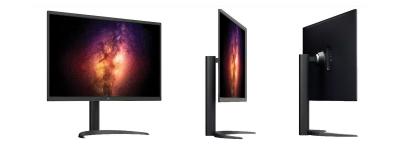
LG 32EP950 OLED monitor (31" 4K printed OLED panel by JOLED)
The most interesting use case for inkjet printing, though, is in the deposition of the OLED stack materials (emitters and other layers). The only company that attempted mass production using inkjet is Japan's JOLED, that in 2021 started printing OLED display panels in its 5.5-Gen production line in Nomi, Ishikawa Prefecture, Japan. The company did not manage to bring costs down and it filed for bankruptcy in 2023.
In 2024, China-based display maker TCL CSoT aims to initiate commercial inkjet printing OLED production in its low-volume 5.5-Gen line, targeting IT applications (laptops, monitors and tablets). The company demonstrated impressive prototypes over the last years, see video above.
Inkjet printing can also be used to deposit OLED materials for OLED lighting panels, which is an easier task compared to display production. In March 2024 Germany-based OLED lighting developer Inuru inaugurated its new OLED lighting inkjet printing production line, the "Dragon Factory", in Wildau near Berlin, Germany.
CSoT is planning to buy JOLED's inkjet printing production equipment and initiate production in China
Inkjet printing pioneer JOLED has filed for bankruptcy, following many years of struggles to increase production capacity and revenues. According to earlier reports from Japan, display maker Japan Display will take over JOLED technology and remaining operations.
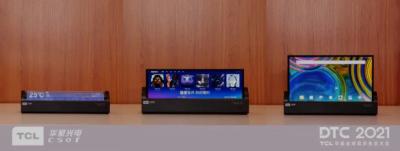
There are now reports from Korea that suggest that TCL's CSoT is considering buying JOLED's OLED production equipment, and moving it to China to attempt OLED production in-house using inkjet printing. If this plan goes through, the plan is to initiate production in 2024. It's not clear whether CSoT is in talks with JDI, or whether JDI did not take over the equipment from JOLED.
Notion Systems – interview on EHD printing in the display industry
Notion Systems, a leader in ink jet printing for industrial applications, has been active in the display market for a long time. The company is now promoting its EHD technology for high precision printing. Here’s an interview we conducted with Antonio Schmidt – SVP Sales & Business Development and Jochen Seeser – Senior Process Development Manager, Notion Systems.
Hello Antonio and Jochen, thank you for your time. In 2022, you started offering EHD printing systems. Can you explain how this technology works and what applications does it enable in the display industry?
Notion Systems has been active in the display market since 2016, when we delivered an n.jet display for pixel printing to a lab of a leading display manufacturer in China. Since then, we have supplied several inkjet displays for RGB printing and encapsulation to various R&D and production sites in China and Taiwan. I think we can also claim that we are the only manufacturer, along with perhaps one other U.S. competitor, that has multiple systems in operation for 24x7 display production.
JDI announced it will acquire JOLED IP and some of its employees, but will not acquire its production facilities and technology
A few months ago we reported that Japan-based inkjet printing OLED developer JOLED has filed for bankruptcy, and that Japan Display (JDI) will take over JOLED's technology and operations. JDI released an official statement regarding JOLED and its plans for the future.
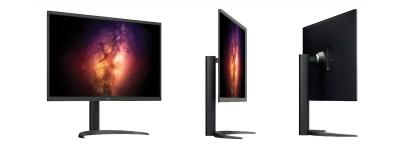
So indeed on March 7 2023, JDI signed a basic agreement to support JOLED. Since then the two companies held 'extensive discussions', following which JDI decided to form a subsidiary company called 'JDI Design and Development' or JDIDD, that will acquire JOLED’s OLED technology development business and all related operations.
TCL CSoT shows new foldable and rollable inkjet-printed OLED prototypes
TCL CSoT had several interesting new OLED demonstrations at SID DisplayWeek 2023, all of which were produced by inkjet printing, which shows the company's commitment to the new production process.
First up is the company latest inkjet-printed panel, this time CSoT showed a 8K (7680 × 4320) 65" TV panel that is foldable (with a bending radius of 25 mm). The panel offers a peak brightness of 800 nits, a response time of under 1 ms and a refresh rate of 120Hz.
UDC announces new narrow-spectrum PHOLED materials, reports advances in OVJP deposition technology
Universal Display announced that it will detail advances in its latest PHOLED materials at Display Week 2023. The company's latest red, green, and blue PHOLED materials offer a narrow emission spectrum, which increases the efficiency of OLED devices, in addition to enhancing the color gamut.
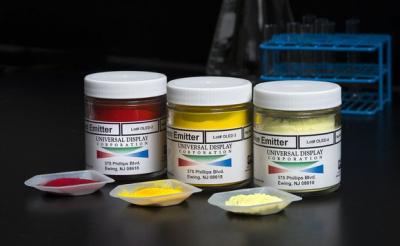
UDC also unveil a new OVJP system printed on a 200mm x 500mm Corning Astra Glass substrate. UDC will also showcase the first-ever fully printed seven-layer (HIL/HTL/EBL/EML/HBL/ETL/EIL), 80 PPI, green commercial-level PHOLED device fabricated by its R&D OVJP system that has comparable device performance with vacuum thermal evaporation (VTE).
JOLED files for bankruptcy, Japan Display to take over assets
A report from Japan updates that JOLED , the OLED inkjet printing pioneer established in 2014, has filed for bankruptcy. The company has been struggling financially for a long time, and will now close down its two production lines and lay off 280 employees (out of 380), as it could not raise funds and has liabilities of around $257 million.
According to the report, display maker Japan Display will take over JOLED technology and remaining operations.
Notion Systems starts building a new headquarters as demand for its printing systems is on the rise
Inkjet printing developer Notion Systems is building a new company headquarters in Schwetzingen, Germany, with a new production plant. The company recently held a groundbreaking ceremony of the new building which will have 3,600 m² of floor space.
Notion Systems is growing at a rate of 20% per year, and these new premises are needed to cope with its increasing number of orders. The company estimates that 18% of its revenue in coming years will be generated from the display industry, for which the company offers machines for inkjet printing of OLEDs, QDs, and more.
ICCAS chooses Notion Systems' inkjet printing solution to research organic materials for display appllications
Industrial inkjet printing developer Notion Systems announced that is has been selected by the Institute of Chemistry, Chinese Academy of Sciences (ICASS) for organic material R&D. Notion Systems worked together with its partner YixinTech as its system went through a long comparison against other inkjet printers in the market.
ICCAS is a multi-disciplinary research institute dedicated to basic research in broad fields of chemical sciences. One of its major research areas is organic materials for display applications.
Kateeva starts to ship 8K QD deposition systems to Samsung Display
According to reports, Kateeva started to ship quantum dots inkjet printing equipment to Samsung Display, for the production of QD-OLED panels. It appears as if Samsung is interested in producing 8K QD-OLEDs, and its current inkjet printing supplier, Semes, is not ready with printers that support 8K QD deposition.
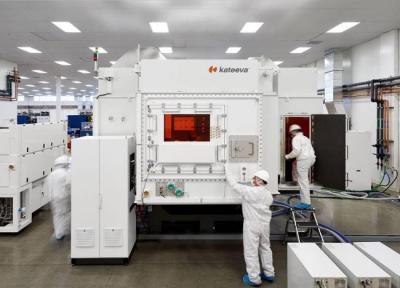
Kateeva announced that it has designed a new system, called the YIELDjet Jarvis, that supports 8.5-Gen substrates and can indeed enable 8K TV deposition. Kateeva says that the Jarvis system has the ability to print using solvent-based RGB inks or nanoparticle inks with its proprietary ink recirculation system to ensure uniform particle distribution.
DSCC: large-area OLED equipment sales to drop to zero in 2023, but resume in 2024 mostly for CSoT's inkjet printing panels
DSCC says that spending on equipment for the production of large area OLED panels (used in TVs and monitors) have decreased from $3 billion in 2019 to $2.05 billion in 2020, $1.47 billion in 2021 and will drop further to $1.42 billion in 2022.
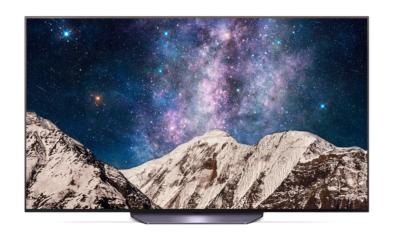
DSCC estimates that in 2023, the spending on such equipment will be zero. But OLED producers will resume buying large OLED equipment in 2024. Spending in 2024 will amount $2.01 billion, and in 2025 - $1.51 billion.
Pagination
- Previous page
- Page 2
- Next page
